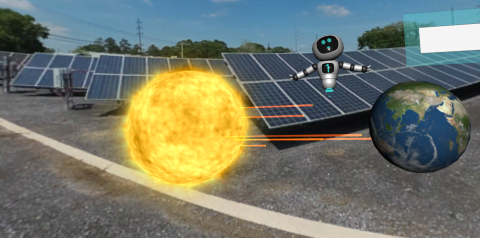MCHE-VR Lab
Mechanical Engineering Virtual Reality (MECH-VR) Lab
The Mechanical Engineering Virtual Reality (MECH-VR) Lab is located in Rougeou Hall on the UL Lafayette main campus. This lab specializes in advanced visualization techniques for engineering training and education specifically in the fields of alternative energy and renewable resources. The lab includes a Cave Automatic Virtual Environment (CAVE) with 3D projectors and full body tracking. This immersive virtual reality environment enables virtual tours and interactive group design. The current primary focus of the lab utilizes several Head Mounted Displays HMDs such as the Oculus Rift, HTC Vive, Oculus Go, and several mobile HMDs to display immersive applications and tracked remotes for interaction. The lab resources enable the quick development of these immersive applications for education and training of engineering products and processes. The MECH-VR Lab would enable the visualization of complex utility data, including for example, the visualization of the power flows within the Cleco Grid, including the effects of outages, cyber-attacks, intermittency of renewables, distributed generation, and microgrids.
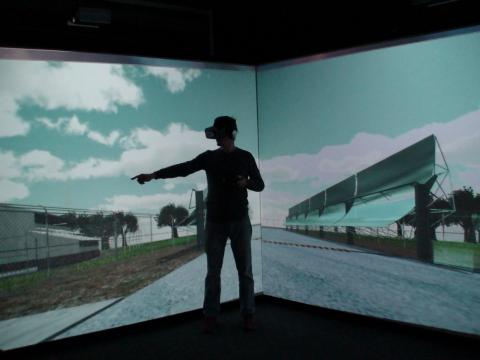
MECH-VR Lab personnel supervised by Dr. Terry Chambers can assist students and faculty to convert a 3D CAD model they are studying into a form that can be viewed in the three wall 150 inch screen CAVE environment, or in the fully immersive Oculus Rift headset.
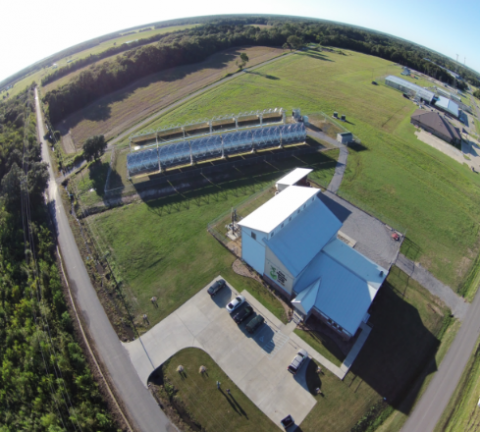
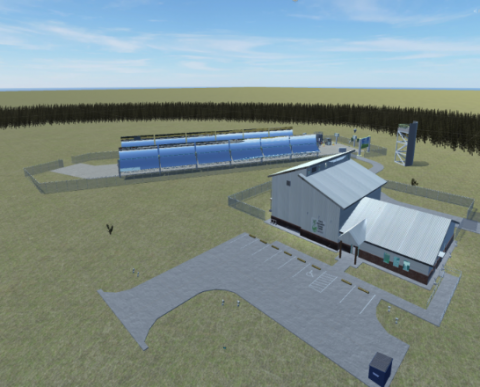
The Virtual Energy Center (VEC) uses a scale model of the actual concentrating solar power plant at the START Lab.
MECH-VR Lab located in Rougeou Hall, room 212, is a both a research lab and a resource for Mechanical Engineering students and faculty who have engineering models they would like to visualize.
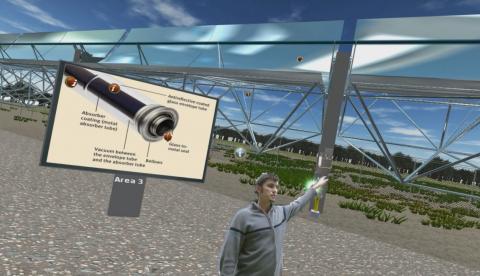
The VEC application is a remotely guided collaborative networked VR environment for learning about concentrating solar power.
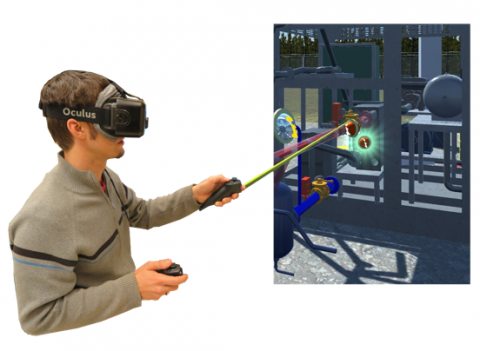
Figure 1: Student interacting with virtual environment with pipe flow animation.
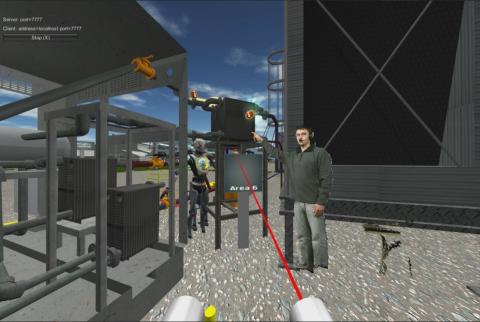
Figure 2: Remote guide explaining the condenser.
The Photovoltaic (PV) Applied Research and Testing (PART) Lab encompasses a 1.1 MW PV power plant with three solar panel technologies, metrological and radiometer stations, and PV testing lab. PV-VR is an application that uses a scale model of the photovoltaic (PV) power plant for educational interactive tours in virtual reality (VR). The actual PV solar power plant is virtualized and virtual representations of all the objects in the plant are inserted into the application. PV-VR takes users on a guided educational tour that allows them to interact with the various technologies to facilitate virtual hands-on learning. The virtual tour is guided by a teacher avatar that explains each technology and initiates animations and interactive educational games with constructive feedback to reinforce learning. PV-VR allows users to learn about solar power technologies and, how power is produced, converted and transmitted.
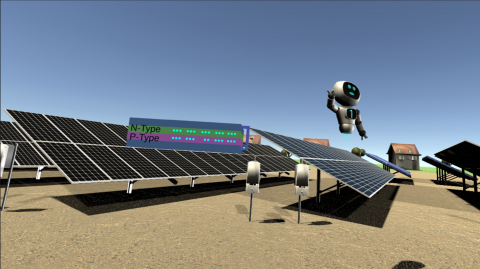
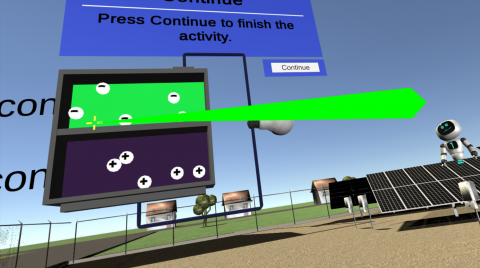
a) b)
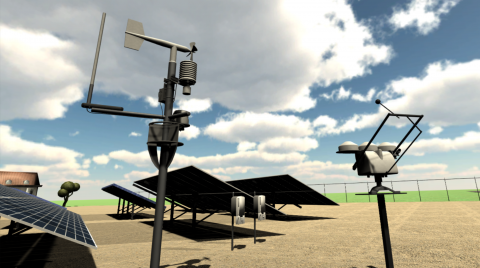
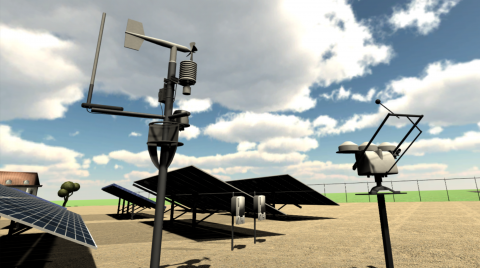
c) d)
Fig. 3: 3D Modeled environment screen shots. a) Direct current from photons animation, b) Photon shooter activity, c) Inverter animation, d) Metrological station and radiometer.
ADDITIONAL PICTURES:
Highschool students previewing PV-VR during Engineering Day 2019.

PV-VR was loaded on mobile VR-headsets for students and faculty at ULS day April 2019.
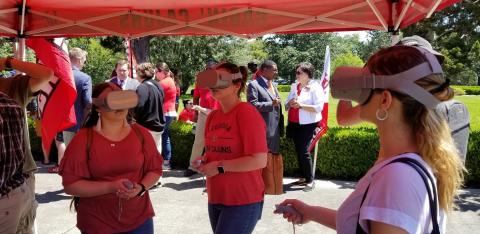
A second version of PV-VR was created using 360o panoramas of the PV power plant.
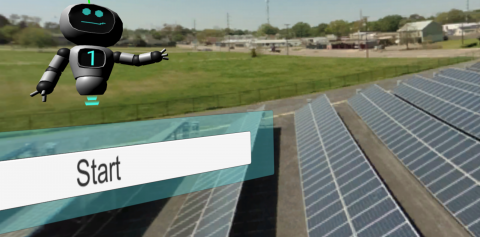
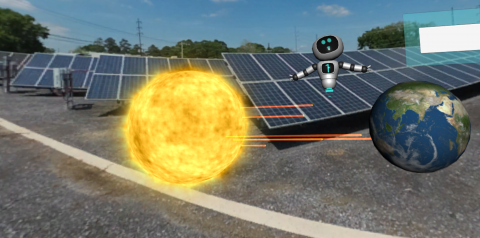
a) b)
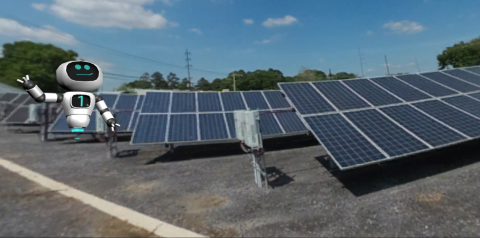
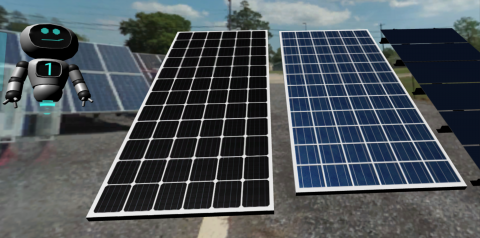
c) d)
360o panorama application screen shots. a) PV-VR overview, b) Solar resource explanation, c) Polycrystalline PV modules, and d) Module selection activity.
